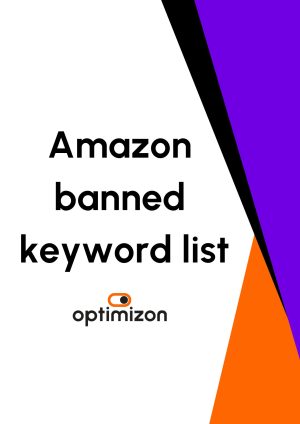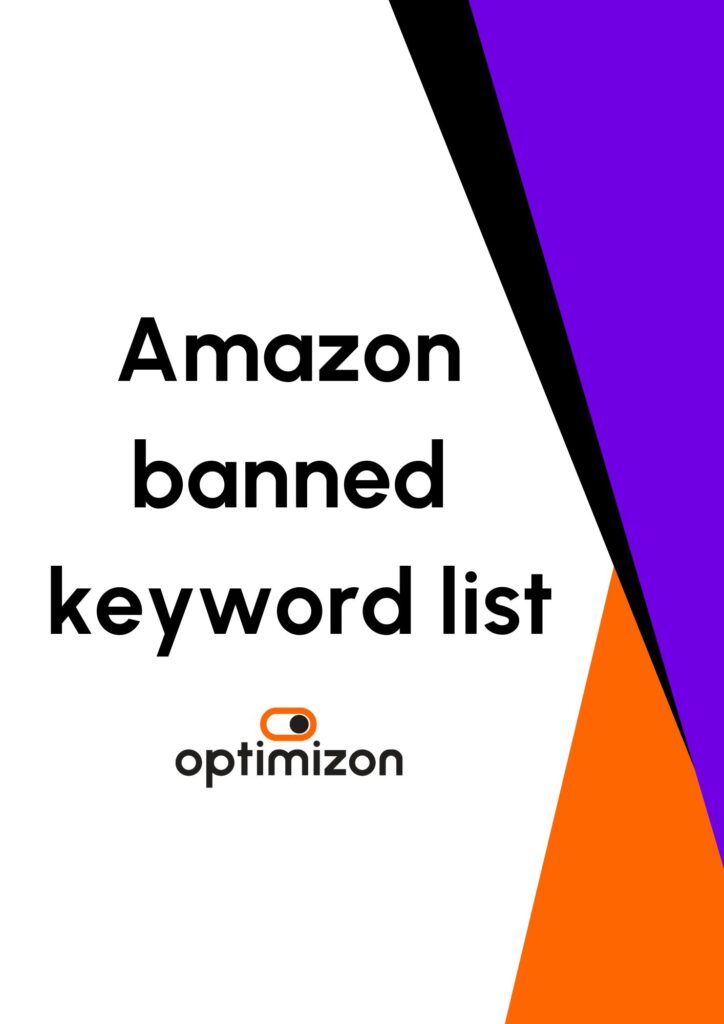Amazon is the largest online marketplace on the planet, so it makes sense for your brand to be visible on the platform. However, for companies selling goods via Amazon, there are various packing, labelling and fulfilment options, all of which must meet Amazon’s packaging requirements.
It’s easy to get put-off or confused by the lengthy packaging policies, requirements and options. Optimizon helps businesses selling on Amazon make sense of the lengthy packaging and labelling rules. However, if you’re looking to take care of this yourself, we have unpicked the most important things you need to know to help you make sense of Amazon’s packaging and labelling rules and options. These options even include the choice of having Amazon pack your products for you. Just one of the services available under the FBA (Fulfilled by Amazon) scheme.
Order fulfilment
Firstly, for any company selling products on Amazon, there are three types of order fulfilment. This is worth paying attention to because each has differing packaging requirements:
- FBM(Fulfilled By Merchant) – this means that your company receives the order and is responsible for packaging and posting the product.
- SFP(Seller Fulfilled Prime) – this is where you process the order and pack the product, then Amazon carriers collect and deliver those orders, in one day, to customers.
- FBA (Fulfilled By Amazon) – this is where your orders are processed and dispatched from the Amazon warehouse. So, you need to send your items to Amazon in bulk.
Essentially, for the purpose of discussing packaging and labelling, these three fulfilment options fall into two categories; FBM and FBA (SFP is similar to FBM in the sense that it still requires the seller to process the orders). We’ll be referring to FBM and FBA throughout this guide, which are also the two main types of fulfilment.
FBM (Fulfilled By Merchant)
FBM is the basic Amazon option whereby your company receives the order and is responsible for packaging and posting the product. The packaging rules are not as strict under this option, since Amazon won’t be involved in handling or dispatching the items whatsoever.
However, it’s still worth taking note of the packaging requirements so that your goods meet Amazon customer expectations.
Amazon’s success is largely down to logistics. Amazon changed the logistics landscape and is a big part of the reason customers all over the world expect their items within 24 hours of ordering. Because most business don’t stand a chance of packing and dispatching items at the speed Amazon does, they opt for the FBA service to take advantage of this service.
FBA (Fulfilled by Amazon)
If you are a seller on Amazon, you have the option to sign up and register for the FBA (Fulfilled by Amazon) scheme. There are a number of benefits to having Amazon fulfill your orders for you:
- Speed (Amazon gets your products to your customers faster than you can).
- Convenience (Amazon takes care of order processing, picking, packing, packaging and shipping to your customers. This is particularly convenient when selling many small items).
- Customer Service – sellers using FBA shouldn’t be dealing with customer queries relating to delivery, returns, refunds etc as these should be directed to Amazon Customer Service.
- Access to Amazon Prime sales (customers love getting their products the next day).
- Free shipping for your customers.
- You can even process orders from other platforms (that’s right – you can leverage the benefits of Amazon’s superior logistics on other sales platforms).
- Access to the Amazon Prep service (where Amazon packages your products for you).
- Option to have your supplier send products directly to Amazon, so you never need to handle the goods.
- No signup fee.
FBA offers convenience and in many cases, cost savings (when compared with the costs of your own order fulfilment). There is the option to package your items yourself, or have Amazon prepare them for you. However, whichever route you take, Amazon requires you to follow their packaging guidelines. Following these requirements is particularly important when sending products to the Amazon warehouses. Even at this point sellers can become overwhelmed by the policies, but they aren’t as complex as they first appear.
Making sense of Amazon Packaging requirements for FBA
Before we get into packaging, it’s worth noting that labels must also follow strict guidelines too. If you are going down the FBM route, it’s still a good idea to ensure that your packaging and labelling follows Amazon guidelines before posting your items to the buyer. However, if you are opting for the FBA route, note there are two differing elements to packing for FBA:
- The labels and packaging of your individual products must be organised (these are the individually packaged items that will ultimately be sent out to your customers). You can either package and label your items individually yourself, or you can leave this to Amazon, who will charge you the costs of doing this.
- The labels and packaging for your bulk delivery to the Amazon warehouse. This is where you send your items in bulk to Amazon, for Amazon fulfil your orders. You need to package the boxes or pallets according to Amazon’s rules, to enable them to track and process your orders.
Labels
Most importantly, your product requires a barcode. For FBA you’ll need barcoded labels for your individual products, and for your bulk delivery to the Amazon warehouse.
There are three types of barcode available:
- Manufacturer barcodes (eligible barcodes include GCID, UPC, EAN, JAN or ISBN).
- Amazon barcodes (such as FNSKU).
- Brand owner only (some products may require additional identification to help prevent counterfeiting.
Within Seller Central, you can organise the labels and print them off. If you don’t have your own barcode system, you can apply for Amazon barcodes within Seller Central.
Manufacturer Barcodes
The seller account is set to default to Manufacturer barcodes. This means the barcodes already printed on your products can be used, so you do not need to apply an Amazon barcode label.
However, note that not all products are eligible to use manufacturer barcodes. For example, expiry dated products will always require an Amazon barcode label.
Commingled Inventory
It’s also worth mentioning that when a manufacturer barcode label is used, the item is eligible for commingled inventory. This means that Amazon may send the same product from a different supplier to the end customer (for example, if it was stored in a closer warehouse).
However, sometimes Amazon will decide that an item is no longer eligible for commingled inventory and an Amazon barcode is required, even if the item was previously using manufacturer barcodes. For example, if the manufacturer barcode maps to more than one ASIN, then an Amazon barcode is required.
FBA Label Service
With FBA, there is an option for Amazon to label your products for you (once they receive the bulk delivery), but the charge for labelling could be relatively high if you are selling low margin products. A fee of £0.15 is charged for each unit that is labelled and received using the FBA Label Service.
You can choose to label units yourself when you create a shipment. Note that you can change your default settings for the FBA Label Service within Seller Central at any time.
Once you have your barcode, the following standard packaging information will also need to be added:
- Your respective barcode
- Official business address
- Contact info: phone number or e-mail address
- CE-certificate or LFGB certificate (if applicable).
- Expiration date (if applicable).
How to label products for FBA
Here’s a simple video guide on how to label products properly for Fulfilment by Amazon:
For a useful and more in depth tutorial about how to print and edit UPC and FNSKU labels, it’s worth watching this short video:
Packaging
Once you have your labels organsied, it’s time to ensure your products are packaged according to Amazon’s requirements.
You can find the full guidance to packaging on Seller Central here (note that you will need to log into your Amazon account to view the document).
As you can see, on the face of it, the guidance is comprehensive. However, don’t be put off. Imagine how many different types of products are sold by Amazon, all with differing requirements; foods, liquids, electrical equipment, delicate and fragile items, etc.
Once you have the basics covered (discussed below), you only need to look at the specific guidance relevant to the type of product you are selling. As such, we won’t go into detail on every type of product, but our tip is to read only the section of the guidance that applies to your product type. This could be glass bottles, electrical items, etc. The guidance will be specific to what you are selling.
Packaging for FBA
When sending your goods to Amazon for Amazon Fulfilment, the rules are designed to ensure that Amazon knows exactly what is inside the box or pallet being delivered to them. Remember that Amazon warehouses are largely automated, so it’s important to get this right. Ensure that:
- Loose Products: Loose products (when sold together) are in the same package.
- Sold as Set: Sets with many pieces within one box have to be marked with ‘Sold as set’ or ‘Do not separate’.
- Boxed Units: Boxes must be six-sided and completely closed, difficult to re-open and can withstand light pressure.
- Poly bagged Units: Poly bags must be totally sealed and must contain a barcode. Warnings must be printed on the bag or applied as a label where openings larger than five inches exist.
- Expiration Date: Expiration date must be displayed on the individual article as well as on the container, where appropriate.
- Case-packed products: All boxes with the same product must contain equal quantities and have matching SKUs.
If you’re still confused, here’s a great video tutorial about how to send your first shipment to Amazon FBA. You can see step-by-step, how to create labels, put together a shipping plan, and the various options within seller central:
Imported goods delivered straight to Amazon FBA Warehouse
Did you know that your imported goods can be delivered directly to an Amazon FBA warehouse, meaning that you will never need to lay hands on them?
There are many circumstances in which this could be useful to your business. Particularly from a logistical standpoint. However, any imported deliveries direct to Amazon must follow the same packaging and labelling requirements.
The good news is that an increasing number of suppliers are becoming familiar with Amazon packaging requirements and standards. All you need to do is ask your supplier to label your goods for you using the labels generated from Seller Central.
If it’s impractical for you or your importer to package the items individually for dispatch, Amazon can take care of this for you.
It’s important to understand that items going to the fulfilment centre must be ready/prepped enough to be sent directly to the buyer, or you must pay Amazon to do this using the prep service (below). If you do not organise either, items may arrive in a damaged condition as they have to sustain handling by couriers. Depending on the category, Amazon may ship the item in the product packaging without an outer box. For example, this happens a lot in the Kitchen & Home category. In other words, the shipping label will be placed directly on the product box. Standard retail packaging may not be sufficient and may arrive in a tatty condition.
FBA Prep Service
If your products are being sent directly to Amazon to by your supplier or importer, or it’s not time or cost effective for you to package the items at your own warehouse, you can use Amazon’s FBA Prep Service. This means that Amazon will properly package and prepare your products for fulfilment.
There are a number of different fees charged to FBA sellers for the Prep Service, but since Amazon operates at scale, the costs can sometimes work out at a more cost effective rate than packaging the items yourself.
This is a perfect solution if:
- You are unable to package the items yourself at a lower cost.
- You have your items sent directly to the Amazon warehouse from your supplier, and require the items to be packaged.
Again, you must specify if you want to make use of Amazon’s FBA prep service, otherwise items could get sent out with insufficient packaging. The table below shows the current prices of Amazon’s FBA prep service.
Here’s the full guide to the FBA Prep Service. Note that you must login to Seller Central to view this guidance.
Amazon Preferred Packaging
If you want to keep control of your own packaging, or you can package items at a lower cost than the Amazon FBA Prep service, it’s still worth looking towards Amazon Preferred Packaging. Amazon packaging guidelines are specific, so it makes sense to buy packaging supplies that meet Amazon’s FBA requirements.
Sellers can now get Amazon-preferred poly bags, boxes, stretch wrap, bubble packs, and more directly from Amazon. For sending products to be FBA, sellers can also get free supplies from UPS, FedEx, and USPS – but will need to send the goods to Amazon fulfilment centres utilising the specific rates from each of those vendors. You can get quotes directly from the individual courier companies.
Packaging register
Don’t forget, even if your business opts for FBA, you remain responsible for the packaging and consequently for the waste.
This means you have to register your packaging and the resulting waste in the packaging waste register. You must register your business if:
- you handle more than 50 tonnes of obligated packaging a year
- your turnover is more than £2 million a year
You are deemed to ‘handle’ packaging if your business:
- manufactures or converts raw materials to make packaging
- fills packaging with products
- sells packaged goods to customers
- hires out packaging, eg pallets
- operates a franchise or other licensed business, including pubs
- imports packaging or packaged goods
- brings transit packaging into the UK that will end up as waste in the UK
Obligated packaging producers must follow rules which help to:
- reduce the amount of packaging produced in the first place
- reduce how much packaging waste goes to landfill
- increase the amount of packaging waste that’s recycled and recovered
These are in addition to waste duty of care rules all businesses must follow.
Amazon packaging requirements – Key Points
Hopefully this guide has helped make sense of the different strands of Amazon’s labelling and packaging requirements, particularly if your business wants to take advantage of Amazon’s FBA service, or indeed the Amazon Prep service.
The key takeaways are:
- Only read the packaging guidance specific to the type of product you are selling.
- If you are sending packaged products to Amazon for fulfilment, use Amazon Preferred Packaging if possible.
- Labels can be created in Seller Central.
- When sending goods for Fulfilment by Amazon, ensure your boxes or pallets are labelled properly, so that Amazon knows what is being received.
- Work out the costs of packaging the individual items yourself; the Amazon Prep Service may work out more cost effective, or simplify your processes.
If your business needs help with Amazon or any other online marketplace, or would like to know more about how you can take advantage of FBA or Amazon Prep service, please get in touch with our team. Optimizon will be happy to help and answer any specific queries you have.





